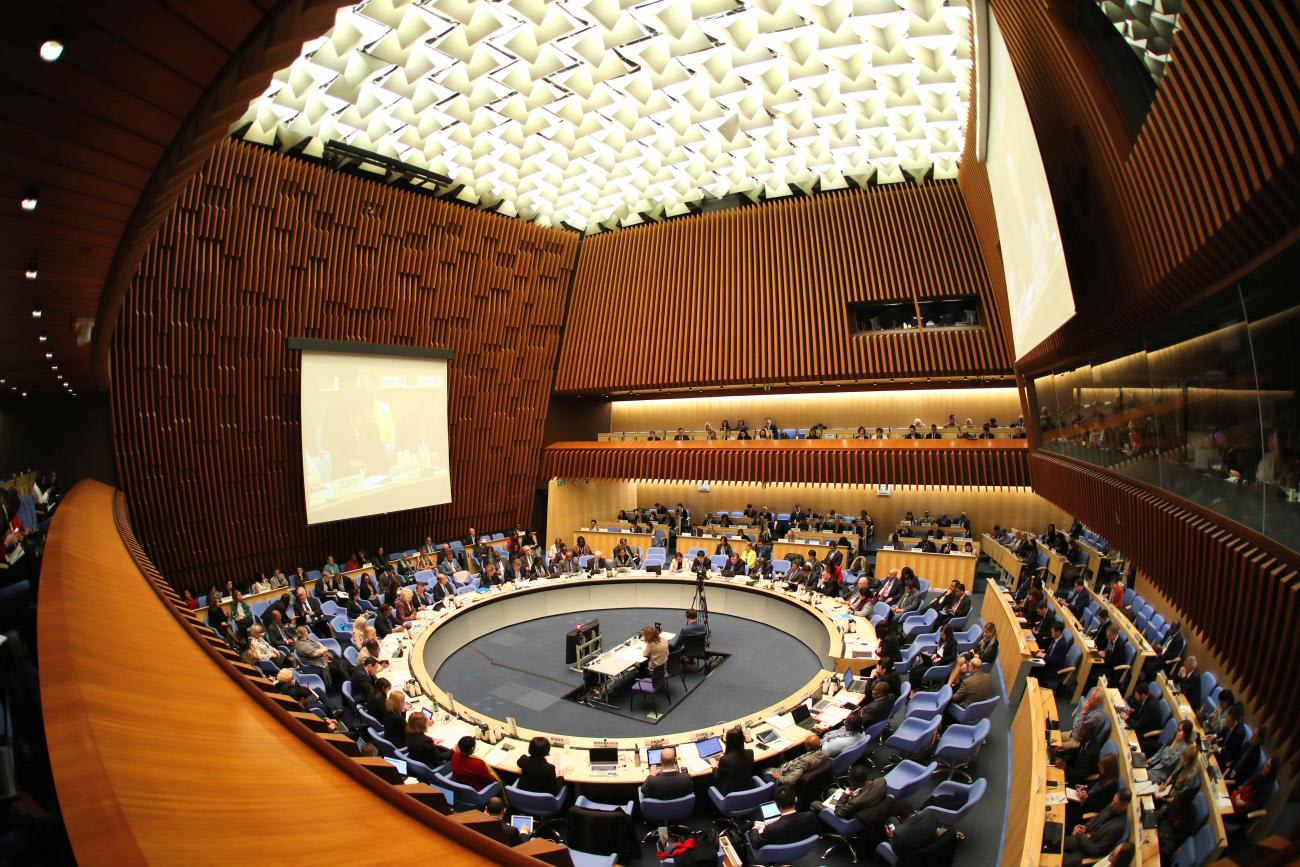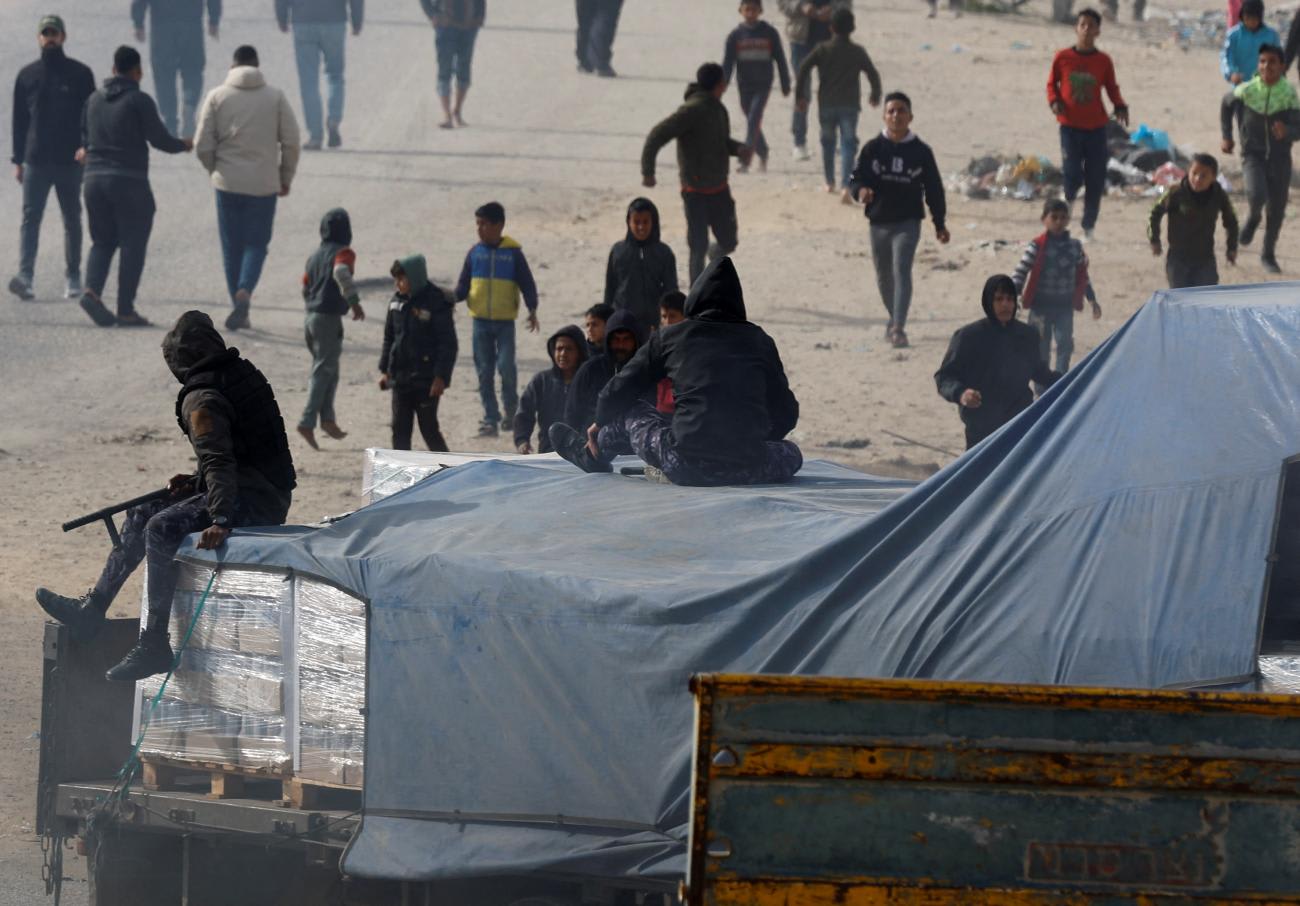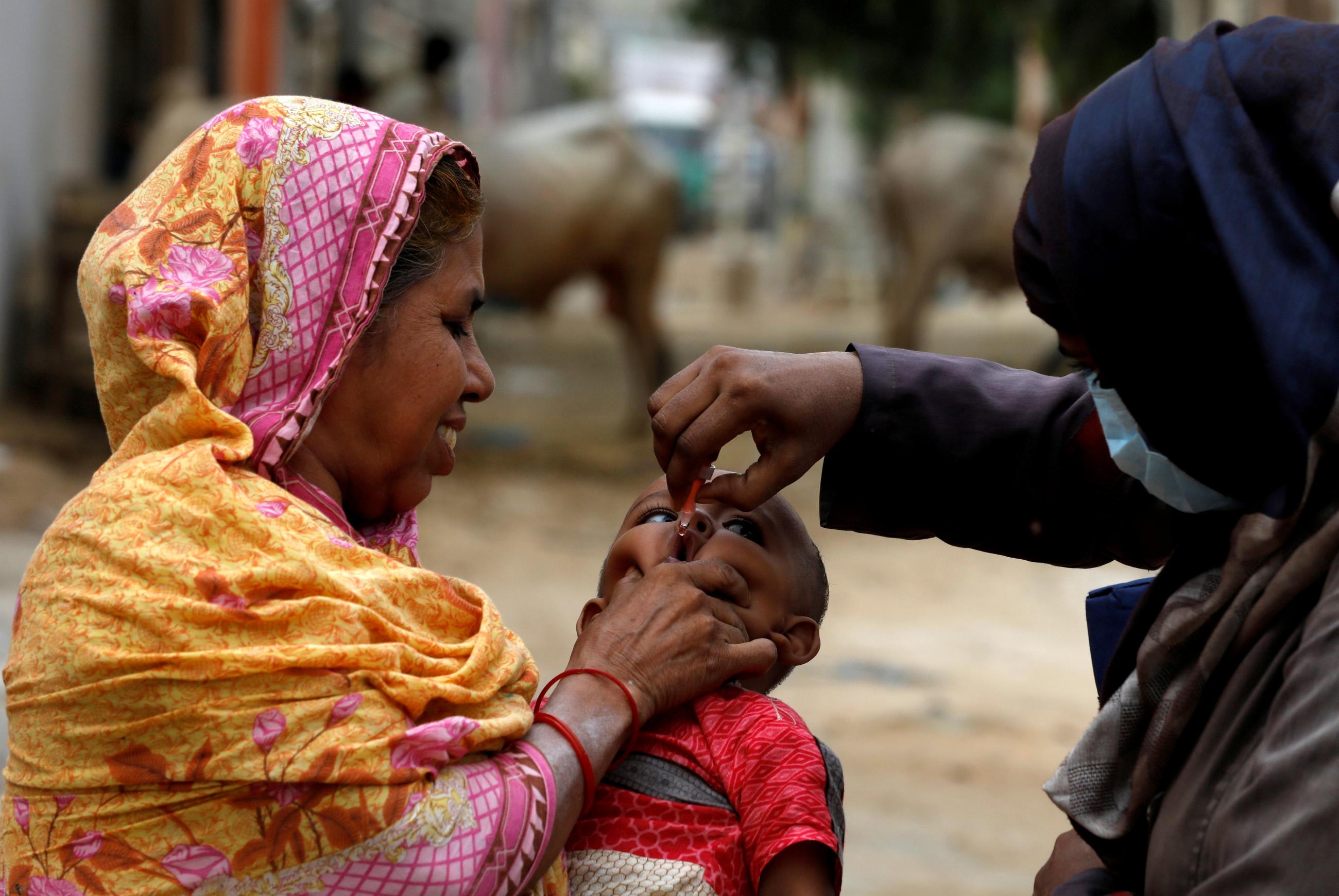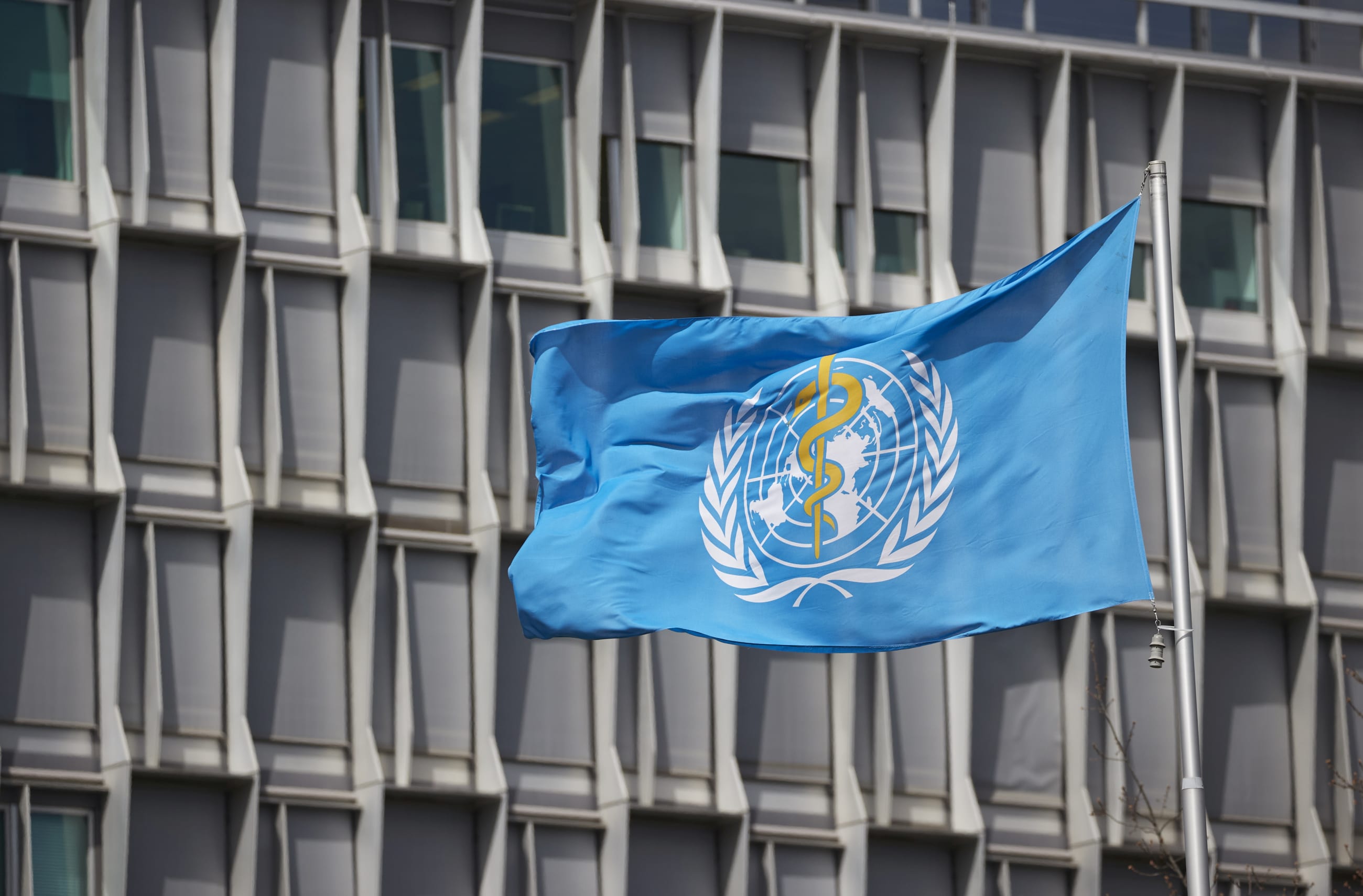Every year, the World Health Organization (WHO) Executive Board meets at the end of January to discuss the world's most pressing health issues. Composed of thirty-four member state representatives appointed by regional members on a rotational basis, the group previews the items that will be presented and decided upon at the full meeting of the one hundred ninety-four member states at the World Health Assembly, happening in May.
The executive board's agenda and discussion areas are largely seen as markers for the world's health priorities and the hot topics we will see throughout 2024. Here's a round-up of what to expect next week.
Shaking Up the Legacy of Inefficient Financing
The executive board will consider a paradigm shift in how the WHO will finance its future.
This discussion will be happening amid a backdrop of fiscal constraints countries are facing; multiple asks on the horizon for billions of dollars to global health initiatives such as Gavi, the Vaccine Alliance, and the Global Fund to Fight AIDS, Tuberculosis and Malaria; and a call to change the way the world finances health and development. At its heart, the financing discussion is about sustainably financing the WHO to meet the increasing expectations its member states—and the world—place on it.
The executive board will consider a proposal for an investment round to finance its next strategic period, known as the fourteenth General Program of Work (GPW14). It covers the four-year period from 2025 to 2028. While a large focus of attention will turn to the financial ask of a proposed $7 billion to its base budget over the four years, digging deeper reveals what's really at stake in this new proposal to finance the organization.
This discussion will be happening amid a backdrop of fiscal constraints countries are facing
Those unfamiliar with the budgeting process will be surprised to learn that at the start of any given year, the WHO does not have its full funding to deliver on what member states want the organization to do.
Each WHO general program of work is financed by biennial budgets that express the aspirational and agreed-upon costs for the plan's strategic objectives, outcomes, and activities. Member states concur on these expenses, but they and the WHO's partners do not actually put that money up front at the beginning of the organization's two-year budget period. In contrast, partner groups—such as Gavi and the Global Fund—run pledging events for monetary replenishments so that all funds are committed at the start of the program's strategic period and are known for its full four years.
This dissonance creates a conundrum for the WHO on meeting its increasing expectations: How can it deliver on activities when not all of the money is in the bank?
Currently, the WHO copes with an exhausting cycle of funding reallocation and reprioritization. Some areas of the base budget are supported by donors through earmarked funds. The organization does its best to use any flexible monies on hand to cover the rest.
Doing so can create programmatic gaps or "pockets of poverty"—health topics that fall behind because specific donors cannot be found. This method of funding can also generate operational constraints such as the hiring of an outsized cadre of short-term staff or consultants because longer term contracts cannot be guaranteed.

These constraints are due to the base budget comprising two components. Assessed contributions are member states' dues and flexible funds that can be used for any costs. Voluntary contributions come from governments and other donors for areas they want to specifically fund.
One outsized challenge comes from assessed contributions making up only 16 percent of the base budget, leaving the remaining budget at the whims of donors to choose what gets earmarked for funding. In recent years, the World Health Assembly has moved to correct this gap, leading to the landmark decision to ensure that half of the overall base budget would originate from assessed contributions over an eight-year period, ideally by 2030. But this plan would still leave 50 percent of the WHO budget to come from voluntary contributions, which are sporadic and largely earmarked.
The Investment Round Proposal
Enter the investment round proposal—a way to change how the world funds its health priorities.
The proposal takes on voluntary contributions to ensure the WHO has more predictable, sustainable, and flexible funds for its entire budget. It calls on all its partners to finance up front the next strategic period, 2025 through 2028, asking for its estimated $2.5 billion annually before a year of activities start. This funding plan is more adaptable, allowing it to cover all health areas, not just the ones donors have earmarked. The proposal is a logical way to run any organization and requires a shift in the mindset of the world's health leaders.
The investment round proposes that this flexibility be transitioned according to thematic areas of outputs (such as particular diseases) and geographies (such as Africa) in recognition that donors like to fund their own priority areas. In return, member states would like to see progress on agreed reforms, including the recommendations of the Agile Member States Task Group, that would demonstrate the organization's ability to streamline efficiencies and transparently report on activities. Reforms under discussion range from a new technical committee to improve the functioning of governing bodies to better reporting requirements and closer scrutiny of top leadership.
This funding plan is more adaptable, allowing it to cover all health areas, not just the ones donors have earmarked
The investment round would be held in the fourth quarter of this year, when countries and partners would be invited to make multiyear pledges, ideally with increased flexibility in the funds committed. This event is proposed to be cohosted by member states with attendance by heads of state. Executive board members will decide next week on whether they support the plan for the investment round.
In sum, although the new general program of work, starting in 2025, is estimated to be $11.2 billion over four years, roughly $4 billion of that will come from assessed contributions and program support costs, leaving the call for $7.1 billion to be financed. Although this may sound jarring, the WHO is not asking for an increase in its funds: there is not much change in the yearly amounts it currently manages in its base budget.
What the organization is requesting is for that money to be more predictable (money to arrive at the start of every year), flexible (fewer earmarks), and ultimately sustainable (a commitment to fund the organization in this new paradigm).
Health Amid the World's Polycrises
The need for ongoing financing could not come at a more critical time given the severe conflicts and emergencies, climate change, and economic hardship in constrained fiscal environments. On top of those considerations, more than seventy countries will hold major elections in 2024. The WHO's role as the global agency to address these crises will be another hot topic at the executive board meeting.
During a special session held on December 10, executive board members called on the director-general to deliver a report on the impact to health in Gaza at the board meeting in January. That will be a charged issue, with a clear call from the WHO for unimpeded access to deliver essential medical supplies and needed health interventions to the two million people living in Gaza. The report will detail the state of health in the conflict zone, as well as details on the WHO's delivery of needed supplies and support.

Another agenda item will update the executive board on the crisis in Ukraine. Since February 2023, WHO has delivered an estimated $121 million worth of medical supplies and interventions, directly affecting seven million Ukrainians.
The WHO is currently responding to more than forty-one emergencies, of which fifteen are considered Grade 3, requiring the highest level of the organization's support. The board will discuss the response to these emergencies. Given these emergencies, the organization's annual appeal as it looks ahead for 2024 was announced on January 15 at $1.5 billion.
On everyone's mind in the context of crisis and emergencies is the ability for the world to respond better to the next pandemic. At the World Health Assembly in May, countries will consider the adoption of the proposed WHO Pandemic Agreement. The agreement represents a two-year process of negotiations, and efforts are intensifying as the May deadline approaches.
An update will be given on the first day of the WHO's executive board meeting, though the actual deliberations will take place through the International Negotiation Body (INB), the mechanism charged with finding a consensus. A pair of INB proceedings will be held from February 19 to March 1 and from March 20 to March 28—and aim to yield more detailed drafts of the agreement.
Policy to Action in 2024
In addition to addressing its finances and urgent polycrises, the WHO still needs to deliver its ongoing work as the mandated agency to protect the world's health. A long list of topics will be discussed, and all eyes turn to how these policies become practice.
Climate change is a hot topic, and the executive board will consider the WHO report and update on climate and health including the recent release of its operational framework for building climate-resilient and low-carbon health systems. The health sector contributes 5 percent of the world's carbon emissions, so the WHO has put forward its role to help adapt to climate change from a health perspective, as well as to mitigate efforts in the health sector's contribution to emissions. A more specific consideration of the WHO's role in reducing plastic and chemical pollution through the governing body of the UN Environmental Program will also be considered and agreed by the board, which would then go to the World Health Assembly for adoption.
The WHO has put forward its role to help adapt to climate change from a health perspective
Appallingly, 4.5 billion people—more than half of the world's population—do not have access to essential health services. On point is the update on the universal health coverage commitments all countries made last September at the UN high-level political declaration at the UN General Assembly. One of those commitments was the agreement to implement universal health coverage through a primary health-care approach. The agenda item is an opportunity to learn and share more than fifty country experiences highlighting the policy changes that can help reorient health systems to primary health care. Next week's board meeting also expects to consider a resolution on institutionalizing social participation for health and well-being.
Another topic to watch includes antimicrobial resistance (AMR), as the WHO considers its next global action plan (2025–2035) for adoption at the World Health Assembly, and prepares for the high-level meeting on AMR at the next UN General Assembly this coming September.
Finally, as perhaps a positive outlook on the hot topics of 2024, the progress on Immunization Agenda 2030 (IA2030) will be explored at the executive board meeting and the World Health Assembly. The polio eradication and polio transition plans will also be discussed. Under a member state agreement, the WHO needs to report on the deliverables outlined in IA2030 every two years.
In 2024, the Expanded Program of Immunization will celebrate its fiftieth anniversary. Although challenges remain, the innovations and progress over the last half century will help carve the path for what the world envisions for the next fifty years, leveraging innovations such as new vaccines against diseases such as malaria—and new ways to deliver these medicines, such as micropatches, rather than needles.
At World Immunization Week in April 2024, look for a call to all partners and individuals to join the campaign to celebrate achievements and innovate for the next fifty years. For more on why immunization is an area for positive energy, see here.













